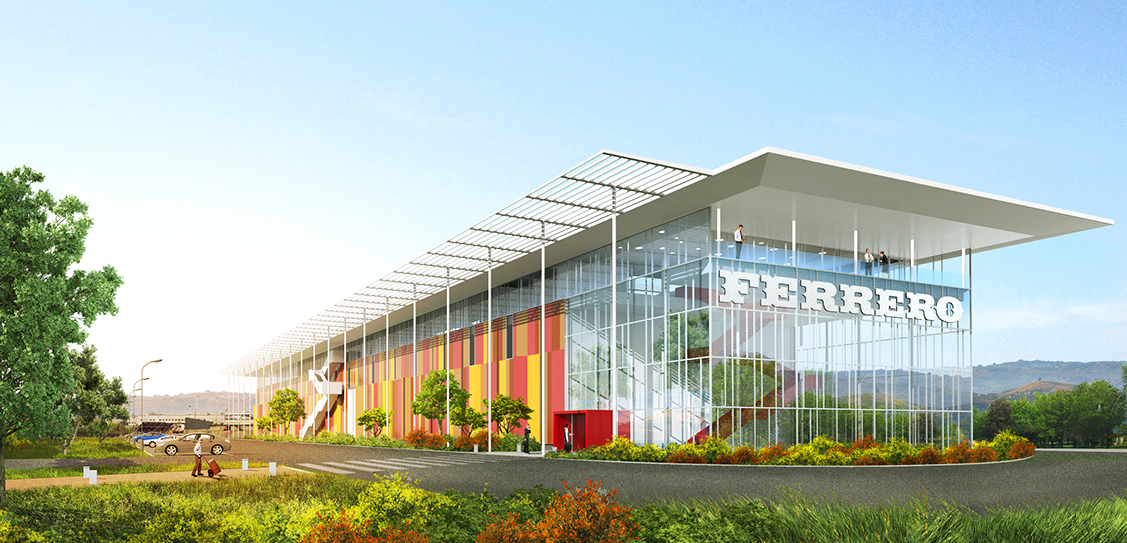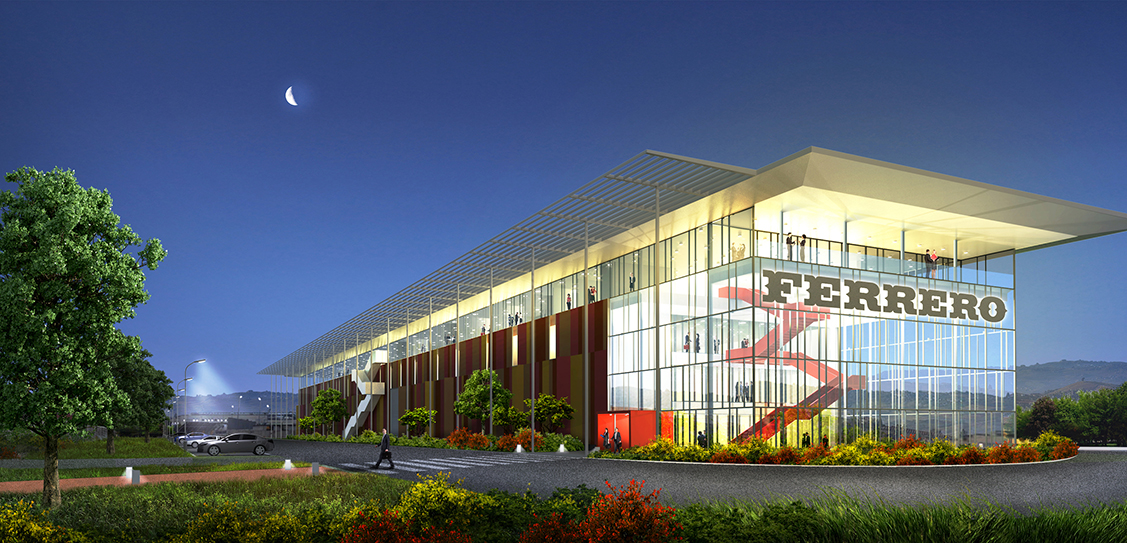Following a competition by invitation held by Ferrero in 2017, the design is sustainable and integrated into the territory and is able to support management and operational functions. The 12,700 sq m space is an ecological building that is nZEB (nearly Zero Energy Building) and will accommodate 200 employees.
Located in Alba, Italy, the architecture was inspired by the scenery, nature and colours of the Langhe, the hilly area located in the Piedmont region in northern Italy. They were reinterpreted through abstract geometries using warm colours from yellow to red.
Simple and linear architecture conceals plants and technical equipment. The building maximises all of the space and minimises the resources needed for operations and maintenance. Technology is seamlessly integrated into the architecture.
The offices located on the last floor have transparent facades, whereas the lower floors containing the workshop and plants are hidden from view. The materials and colours of the offices reproduce the landscape and nature surrounding the building, making the offices a “high-altitude landscape”. Six green areas were introduced to perform a bioclimatic, acoustic and aesthetic function.
The great hall, entirely glazed, covers one end of the building, from ground to roof, with a grand staircase connecting the three floors of the building.
The workshop was designed with a minimal floor plan. Openings in the facade capture natural light while preventing direct sunlight. The curtain walls selected for this area have micro-perforated and sound-absorbing panels to improve the quality of internal acoustics and minimise any sound pollution.
The building was developed to minimise carbon dioxide emissions. The volume is compact, made from industrial materials, mainly dry assembled, maximising all passive contributions (light, air and sunshine) and minimises the resources needed for its management and maintenance. A photovoltaic system on the roof generates 300 kW of energy.



